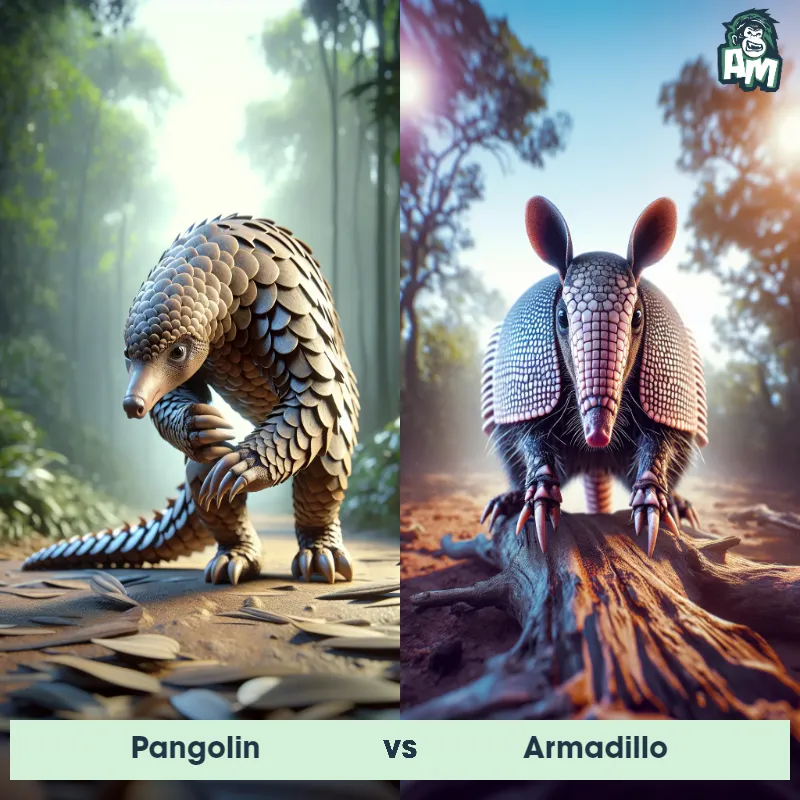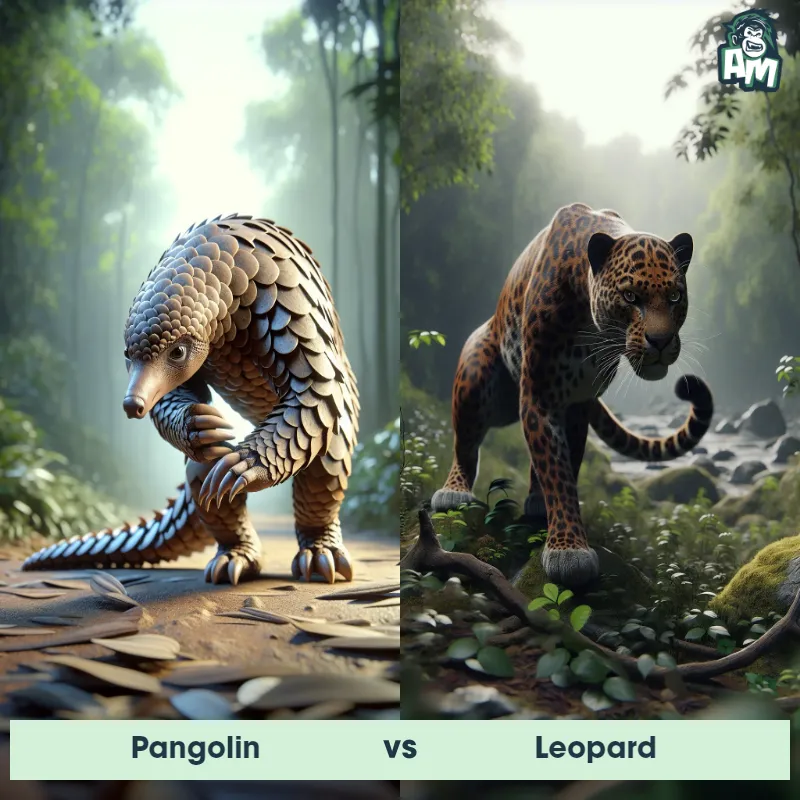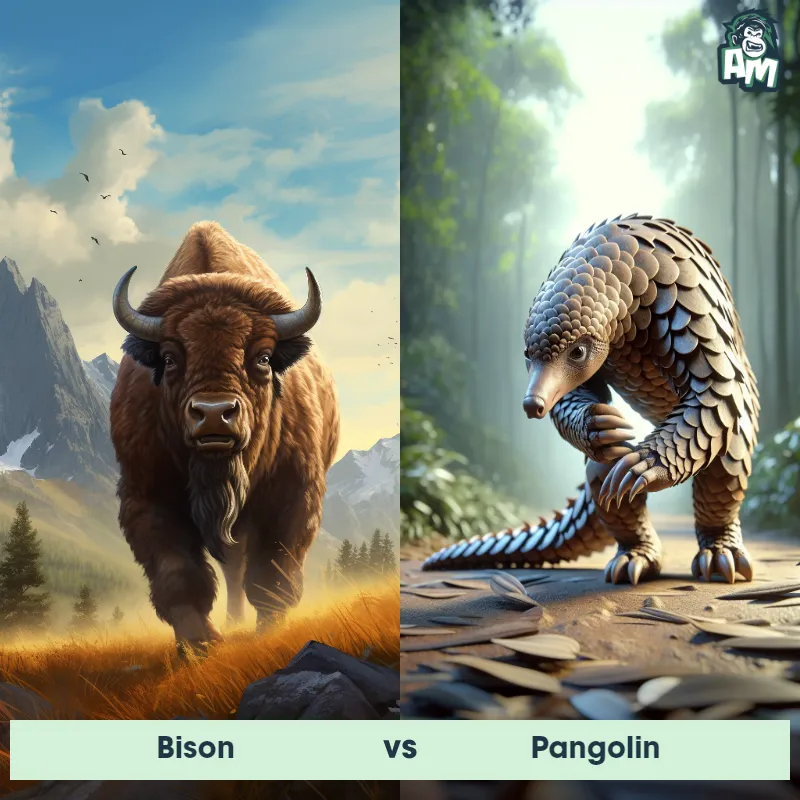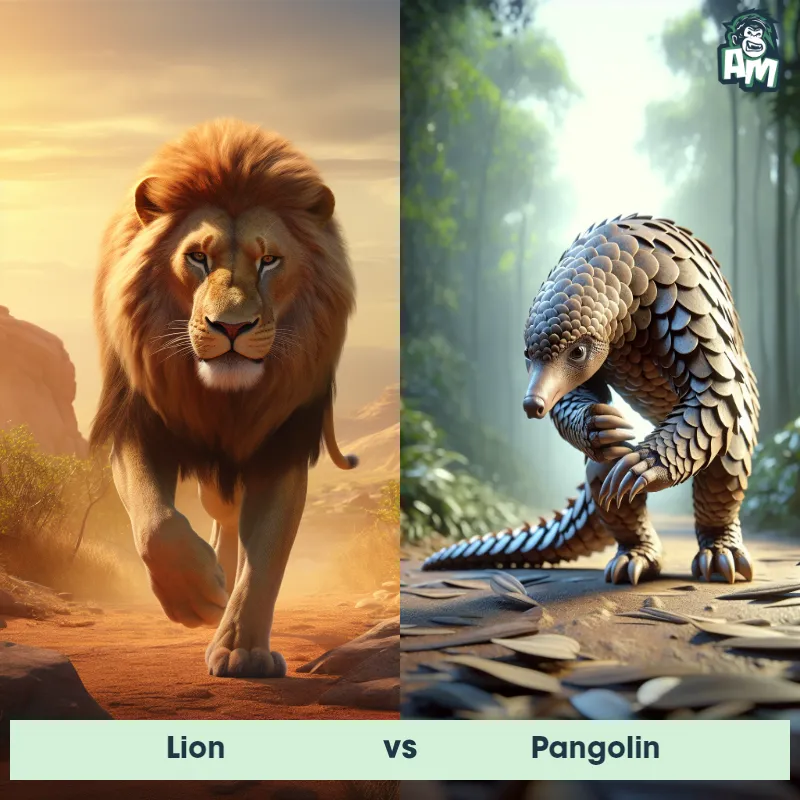The Pangolin
Pangolins are peculiar animals known for their unique appearance and behavior. These scaly mammals have a stout, elongated body covered in thick, overlapping scales made of keratin, giving them the appearance of walking pinecones. Pangolins have a small head with a long snout and a sticky tongue that can extend up to 40 centimeters to catch ants and termites, their main diet. They have strong claws for digging burrows and robust, prehensile tails that help them balance. Pangolins are solitary and nocturnal animals, hiding in trees or underground during the day and emerging at night to forage for food.

| Pangolin | |
|---|---|
| Size | 1-3 feet (30-90 centimeters) |
| Weight | 4-35 pounds (1.8-16 kilograms) |
| Speed | 3mph (4.8km/h) |
| Key Strength | Sharp claws for defense |
| Biggest Weakness | Slow movement |
| Scientific Name | Manis |
| Family | Manidae |
| Habitat | Tropical forests, savannas, grasslands |
| Geography | Africa, Asia |
| Diet | Ants, termites |
| Lifespan | 12 years - 15 years |

The Pangolin
Pangolins are peculiar animals known for their unique appearance and behavior. These scaly mammals have a stout, elongated body covered in thick, overlapping scales made of keratin, giving them the appearance of walking pinecones. Pangolins have a small head with a long snout and a sticky tongue that can extend up to 40 centimeters to catch ants and termites, their main diet. They have strong claws for digging burrows and robust, prehensile tails that help them balance. Pangolins are solitary and nocturnal animals, hiding in trees or underground during the day and emerging at night to forage for food.
Fun Fact: Did you know that pangolins are the only mammals with protective scales? These defensive armor-like scales not only aid pangolins in protecting themselves from predators but also provide them excellent camouflage in their natural habitat.
| Pangolin | |
|---|---|
| Size | 1-3 feet (30-90 centimeters) |
| Weight | 4-35 pounds (1.8-16 kilograms) |
| Speed | 3mph (4.8km/h) |
| Key Strength | Sharp claws for defense |
| Biggest Weakness | Slow movement |
| Scientific Name | Manis |
| Family | Manidae |
| Habitat | Tropical forests, savannas, grasslands |
| Geography | Africa, Asia |
| Diet | Ants, termites |
| Lifespan | 12 years - 15 years |
Pangolin Matchups
We use AI to simulate matchups between the Pangolin and other animals. Our simulation considers size, strength, and natural predatory behaviors to determine the most likely outcome.
Pangolin: Diet, Predators, Aggression, and Defensive Behaviors
What do Pangolins eat?
Pangolins are primarily insectivores, feeding on ants and termites. They use their long, sticky tongues to capture their prey. They can consume thousands of insects in a single day, helping to control insect populations in their habitats.
Do Pangolins have any predators?
Pangolins have a few natural predators, including big cats like lions and leopards, as well as hyenas and humans. These predators are often able to overpower Pangolins due to their size and strength.
Are Pangolins aggressive?
Pangolins are generally shy and non-aggressive animals. When threatened, they will try to defend themselves by curling into a tight ball, using their tough scales as protection. They do not actively seek out confrontations with other animals.
Do Pangolins fight?
Pangolins are not known to be fighters. Their main defense mechanism is to curl into a ball to protect their soft underbelly. However, if provoked or cornered, they may use their sharp claws and strong tail to ward off threats.
How do Pangolins defend themselves?
Pangolins defend themselves primarily by curling into a tight ball, with their overlapping scales providing a strong barrier against predators. They also have sharp claws and a strong tail that they can use to defend themselves if necessary. Additionally, they can emit a foul-smelling odor from their glands to deter predators.
What is Pangolins' biggest weakness in a fight?
Pangolins' biggest weakness in a fight is their inability to move quickly or effectively when threatened. While their scales provide excellent protection, they can be easily caught by a predator if they are unable to escape quickly. Their slow movement and lack of agility make them vulnerable in confrontations with faster and more agile predators.
Fun Fact: An interesting fact about Pangolins is that they are insectivores with an incredible appetite. On average, a single pangolin can eat up to 70 million insects per year, playing a vital role in controlling insect populations.
Fun Fact: Pangolins are extraordinary climbers despite their stout bodies. They are capable of scaling trees and hanging from branches using their strong claws, making them adept at evading predators and accessing hard-to-reach food sources.

















